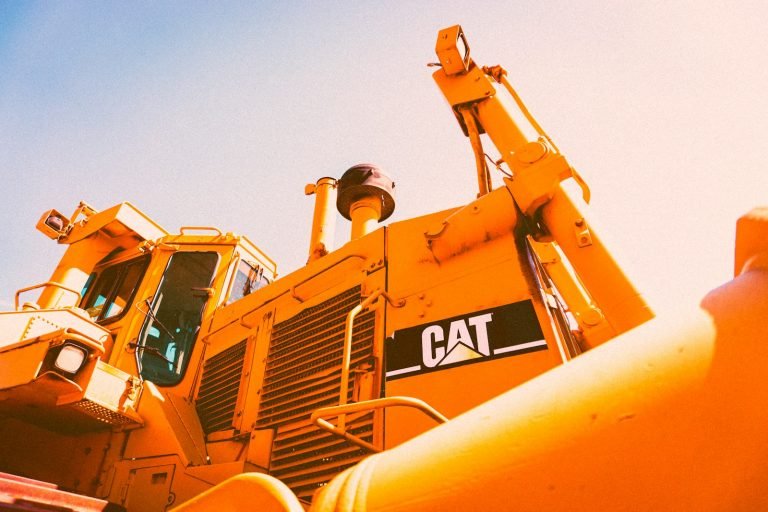Risk Management in Construction: How Insurance Can Safeguard Your Business and Equipment
Outline
-
Introduction
- Importance of risk management in the construction industry
- The role of insurance in safeguarding businesses and equipment
-
Understanding Construction Risks
- Identifying potential risks in construction projects
- The impact of unforeseen events on project timelines and budgets
-
The Need for Comprehensive Insurance
- Types of insurance relevant to the construction industry
- Tailoring insurance policies to address specific risks
-
General Liability Insurance
- Coverage and benefits for construction businesses
- Examples of situations covered by general liability insurance
-
Builder’s Risk Insurance
- Protecting construction projects during the building phase
- Coverage details and considerations for builders
-
Equipment Insurance
- Importance of safeguarding construction equipment
- Coverage options and considerations for equipment insurance
-
Worker’s Compensation
- Ensuring the well-being of construction workers
- Legal requirements and benefits of worker’s compensation insurance
-
Mitigating Construction Risks Proactively
- Implementing safety measures to minimize risks
- The role of risk assessments and preventive strategies
-
Choosing the Right Insurance Provider
- Factors to consider when selecting an insurance company
- Tailoring policies to the specific needs of a construction business
-
Case Studies
- Real-life examples of how insurance protected construction businesses
- Lessons learned from successful risk management and insurance claims
-
Challenges in Construction Risk Management
- Common obstacles faced by construction companies
- Strategies to overcome challenges and enhance risk management
-
Technology’s Role in Construction Risk Mitigation
- Innovative technologies improving construction risk management
- Incorporating digital tools for enhanced safety and efficiency
-
The Future of Construction Risk Management
- Evolving trends and advancements in the construction industry
- Adapting to changes for sustainable risk management practices
-
Conclusion
- Recap of the importance of risk management and insurance in construction
- Encouraging proactive measures for a resilient construction business
-
FAQs
- Common questions about construction risk management and insurance
Risk Management in Construction: How Insurance Can Safeguard Your Business and Equipment
The construction industry is inherently dynamic, with projects involving various complexities and uncertainties. In such a scenario, the importance of robust risk management practices cannot be overstated. This article explores the crucial role of insurance in safeguarding construction businesses and equipment, providing insights into the diverse types of insurance available.
Introduction
In the fast-paced world of construction, uncertainties lurk around every corner. From unexpected weather events to unforeseen project delays, the need for effective risk management is paramount. This article delves into the world of construction risk management, shedding light on how insurance serves as a crucial safety net for businesses and their valuable equipment.
Understanding Construction Risks
Identifying potential risks in construction projects
Construction projects are rife with potential risks, ranging from safety hazards to budget overruns. Understanding and categorizing these risks is the first step towards effective risk management.
The impact of unforeseen events on project timelines and budgets
Unforeseen events can have a domino effect on construction projects, causing delays and escalating costs. This section explores the repercussions of unexpected occurrences and emphasizes the need for proactive risk mitigation.
The Need for Comprehensive Insurance
Construction businesses can’t afford to take risks lightly. Comprehensive insurance coverage acts as a shield, offering financial protection and peace of mind.
Types of insurance relevant to the construction industry
Navigating the insurance landscape can be daunting. This section breaks down the various types of insurance available to construction businesses, providing clarity on their specific roles and benefits.
Tailoring insurance policies to address specific risks
Not all construction projects face the same risks. Tailoring insurance policies to address specific challenges is crucial for ensuring adequate coverage and minimizing vulnerabilities.
General Liability Insurance
Coverage and benefits for construction businesses
General liability insurance is a cornerstone for construction businesses. Understanding its coverage and benefits is essential for ensuring comprehensive protection.
Examples of situations covered by general liability insurance
Real-world examples illustrate how general liability insurance comes to the rescue in situations ranging from property damage to third-party injuries.
Builder’s Risk Insurance
Protecting construction projects during the building phase
Builder’s risk insurance is designed to safeguard projects during the construction phase. This section explores the nuances of this specialized coverage.
Coverage details and considerations for builders
Builders need specific considerations in their insurance coverage. This subsection delves into the details, helping businesses make informed decisions about builder’s risk insurance.
Equipment Insurance
Importance of safeguarding construction equipment
Construction equipment is a significant investment. Exploring the importance of equipment insurance, this section highlights the risks associated with equipment damage and theft.
Coverage options and considerations for equipment insurance
Choosing the right equipment insurance involves understanding coverage options and considering factors such as depreciation and replacement costs.
Worker’s Compensation
Ensuring the well-being of construction workers
Construction sites are inherently risky environments. Worker’s compensation insurance is a moral and legal imperative, ensuring the well-being of the workforce.
Legal requirements and benefits of worker’s compensation insurance
This section outlines the legal requirements for providing worker’s compensation and delves into the benefits it offers to both workers and employers.
Mitigating Construction Risks Proactively
Implementing safety measures to minimize risks
Prevention is often the best form of protection. This section explores proactive measures that construction businesses can implement to minimize risks.
The role of risk assessments and preventive strategies
Risk assessments form the foundation of proactive risk management. Understanding how to conduct effective assessments and implement preventive strategies is crucial.
Choosing the Right Insurance Provider
Factors to consider when selecting an insurance company
Not all insurance providers are created equal. This section provides insights into the factors construction businesses should consider when choosing an insurance provider.
Tailoring policies to the specific needs of a construction business
One size does not fit all in insurance. This subsection emphasizes the importance of tailoring policies to the unique needs and risks of individual construction businesses.
Case Studies
Real-life examples of how insurance protected construction businesses
Concrete examples showcase instances where insurance played a pivotal role in protecting construction businesses from financial devastation.
Lessons learned from successful risk management and insurance claims
Analyzing successful risk management and insurance claims provides valuable lessons for other businesses looking to enhance their protective measures.
Challenges in Construction Risk Management
Common obstacles faced by construction companies
Even with insurance, challenges abound. This section explores common obstacles construction companies face in their risk management endeavors.
Strategies to overcome challenges and enhance risk management
Addressing challenges requires strategic thinking. This subsection provides actionable strategies for overcoming obstacles and strengthening overall risk management.
Technology’s Role in Construction Risk Mitigation
Innovative technologies improving construction risk management
Technology is a game-changer in risk mitigation. This section explores cutting-edge technologies that are reshaping how construction companies approach risk.
Incorporating digital tools for enhanced safety and efficiency
Digital tools are becoming integral to construction risk management. Understanding how to incorporate these tools ensures a safer and more efficient work environment.
The Future of Construction Risk Management
Evolving trends and advancements in the construction industry
The construction industry is evolving rapidly. This section looks at emerging trends and advancements that will shape the future of construction risk management.
Adapting to changes for sustainable risk management practices
Staying ahead requires adaptability. This subsection explores how construction businesses can adapt to changes and foster sustainable risk management practices.
Conclusion
In the intricate world of construction, risk management isn’t a luxury; it’s a necessity. Insurance acts as a crucial ally, offering a safety net that can mean the difference between thriving and merely surviving. By understanding the various facets of risk management and choosing the right insurance coverage, construction businesses can fortify themselves against the uncertainties that often accompany their endeavors.
FAQs
- Is insurance mandatory for construction businesses?
- While not mandatory in all cases, having insurance is highly advisable for construction businesses to mitigate potential risks.
- How can I determine the right insurance coverage for my construction project?
- Assessing the specific risks associated with your project and consulting with insurance experts can help tailor the coverage to your needs.
- What happens if a construction project faces delays due to unforeseen events?
- Depending on the insurance coverage, certain delays and associated costs may be compensated.
- Are there technologies specifically designed for construction risk management?
- Yes, there are various technologies, such as risk assessment software and IoT devices, designed to enhance construction risk management.
- How often should a construction company review its insurance policies?
- Regular reviews, at least annually, are recommended to ensure that the insurance coverage aligns with the evolving needs and risks of the business.




